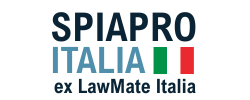
Corporate Counter-Surveillance Sweeps: What They Are, Why They Matter, and How to Run Them
Every quarter, global corporations invite counter-surveillance teams into their headquarters, not due to a known threat or a suspected breach, but because today’s business landscape has made proactive security non-negotiable.
If you’ve never conducted or overseen a sweep, the process might seem like a high-tech treasure hunt for hidden bugs. In reality, it’s more disciplined and less gadget-centric than you might think.
In this article, we’ll look at the statistics on corporate surveillance sweeps and walk through the steps of a real, professional sweep at a blue-chip headquarters, with practical takeaways for security-conscious leaders.
By the Numbers: Why Sweeps Are Non-Negotiable
Corporate espionage might seem rare or reserved for defense contractors and tech giants, but the data tells a different story. Modern surveillance threats don’t just target embassies or intelligence agencies anymore; they’ve moved into the corporate world where conversations can be as valuable as data.
That’s why regular, professional counter-surveillance sweeps are no longer "optional” for blue-chip enterprises. Consider the following stats:
- Up to 85% of corporate espionage cases involve insiders—whether acting with malicious intent or out of carelessness. (Hou & Wang, cited in Phillips, 2025)
- 74% of data breaches involve the human element—errors, misuse of privileges, stolen credentials, or social engineering. (Verizon DBIR, 2023)
- 87% of mobile professionals have experienced someone looking over their shoulder at sensitive information in public places. (Ponemon/3M, 2017)
- 88% of visual-hacking attempts succeed in capturing sensitive information within minutes. (Ponemon/3M Visual Hacking Experiment, 2015)
- 37.9% of observed confidentiality breaches occurred in public areas like corridors, elevators, and cafeterias. (BMC Medical Ethics, 2016)
- Intellectual property theft costs the U.S. economy up to USD 600 billion annually, with corporate espionage playing a substantial role. (The Commission on the Theft of American Intellectual Property)
These figures show that corporate espionage is a widespread, measurable threat—not just a niche problem. Advanced tech defenses are crucial, but so is vigilance in the physical world. Regular sweeps, combined with employee awareness, catch the threats firewalls can’t.
Tools and Anti-Surveillance Equipment Used During a Corporate Sweep
In a corporate environment, a sweep does more than locate planted devices—it reduces risk across boardrooms, corridors, and maintenance spaces. While observation and process carry much of the weight, specialized equipment makes the sweep thorough.
The following counter-surveillance tools are precision instruments designed for environments where intellectual property and confidential negotiations are at stake.
RF Detectors & Spectrum Analyzers
What they do: detect and visualize radio-frequency transmissions from hidden microphones, bugs, and transmitters.
Why it matters: with legitimate transmitters powered down, anomalous signals stand out. A professional spectrum analyzer(1) pinpoints frequency, strength, and behavior to locate sources precisely.
Non-Linear Junction Detectors (NLJDs)
What they do: locate electronic components—even when powered off or shielded—inside fixtures, furniture, and walls.
Why it matters: some devices stay silent until triggered; an NLJD(2) reveals dormant electronics RF alone can miss.
Optical Lens Finders
What they do: detect tell-tale reflections from camera lenses, whether transmitting or recording locally.
Why it matters: an optical lens detector(3) is the specialist tool for physically locating hidden lenses—even when the camera is off.
Portable Sweep Kits
What they do: combine multiple detection technologies in a single, field-ready kit for scheduled and ad-hoc checks.
Why it matters: a portable RF + lens kit(4) lets teams perform consistent checks in offices, hotels, and conference venues.
Contact SpyShopEurope.com for expert advice or a custom kit recommendation.
Pre-Sweep Planning and Anti-Surveillance Techniques for Offices
.png)
Not every sweep takes place at night. Sometimes, the most valuable observations are made during regular business activity, when people are in their natural routines. A "pre-sweep” during office hours shows where conversations happen and which habits could create openings for surveillance. This stage doesn’t require specialized gear—just sharp eyes and a quiet presence.
Mapping the Environment: Anti-Surveillance Techniques in Action
Before using a single device, begin with a simple walk. You’re not hunting for physical bugs—you’re reading the habits of the workspace.
Here’s what to observe:
- Windows or vents ajar near sensitive rooms
- Unattended phones (off-hook or face-down)
- Visitor patterns and floor access
- Informal conversation hotspots
This initial walkthrough is your baseline. It helps you spot natural vulnerabilities before technical assessments.
Conduct a Human Audit
Most breaches begin with small human lapses. Watch for:
- Unsecured documents on desks or in unlocked cabinets
- Passwords on sticky notes or visible screens
- Access cards or IDs left in public spaces
- Unattended open laptops/devices
A friendly, private follow-up with department heads is often more effective than any gadget.
Assess Acoustic Vulnerabilities
Acoustic leakage is often underestimated. In boardrooms and executive offices, check:
- Echo patterns that carry into adjacent spaces
- Sound leakage in hallways
- Speakerphones accidentally transmitting to open lines
- Glazed partitions/windows that can vibrate
Quarterly Counter-Surveillance Sweep — Step by Step
.png)
After hours, with staff gone and devices powered off, you can work in a controlled environment free from interference. This is when the methodical, tool-driven inspection happens.
Step 1: Prepare the Environment
Power down known transmitters (Wi-Fi, cordless phones, mobiles). Secure the area so no one enters or leaves during the sweep. This creates a clean RF environment where anything detected is truly suspicious.
Step 2: Visual Sweep with an Optical Lens Detector
Dim the lights and move slowly, aiming the detector at surfaces, mirrors, and fixtures. Hidden lenses flash back a pinpoint reflection—even when disguised inside a smoke detector, picture frame, or clock. Don’t neglect ceilings, vents, and decorative pieces. A few patient passes with a lens detector(3) can expose devices otherwise invisible.
Step 3: RF Scan with Legitimate Emitters Off
Quiet the airwaves by turning off legitimate transmitters, then run a full-band sweep with a spectrum analyzer(1). Watch for persistent spikes or bursts that shouldn’t be there, then locate their sources.
Step 4: Physical Search
Perform a hands-on inspection under desks, behind fixtures, and inside projectors or conference equipment. Examine ordinary-looking objects: clocks, power strips, plant pots, wall art. Look for odd wiring, mismatched screws, or unexpected battery compartments.
Step 5: NLJD Sweep for Dormant Electronics
If RF is clean but doubts remain, use an NLJD(2) to detect semiconductor junctions in inactive or shielded devices.
Step 6: Look Beyond the Obvious
Add storage areas, server rooms, rarely used offices, and maintenance corridors to your checklist—they often provide power, cover, and minimal monitoring.
Debrief Collaboratively
When the sweep wraps up, debrief as a dialogue, not a "gotcha.” Cover patterns and vulnerabilities, any devices uncovered and mitigations, what’s working well, practical fixes, and simple ways to weave awareness into daily routines.
Why This Process Matters to Corporate Security Leaders
The line between digital and physical espionage has blurred. Boardroom conversations can be as valuable as databases—and just as vulnerable. Treat sweeps as a recurring pulse-check on security culture, not a box-ticking exercise.
Key takeaways:
- Security culture grows from the ground up.
- Sweeps reset awareness—prevention as much as detection.
- Proactive sweeps protect reputations as well as data.
- Process and discipline matter more than gear.
- "Nothing found” ≠ "nothing there.” Regular checks are essential.
References
- (1) Spectrum Analyzer — Delta X G2/12 (0–12 GHz)
- (2) Non-Linear Junction Detector (NLJD) — EDD-24XT with Extension Pole
- (3) Hidden Camera Lens Detector — OPTIC-2
- (4) Portable RF & Lens Detection Kit — Advanced RF and Lens Detection Kit
Damir First
CEO of SpyShopEurope.com
Request a custom quote for a personalized recommendation.




